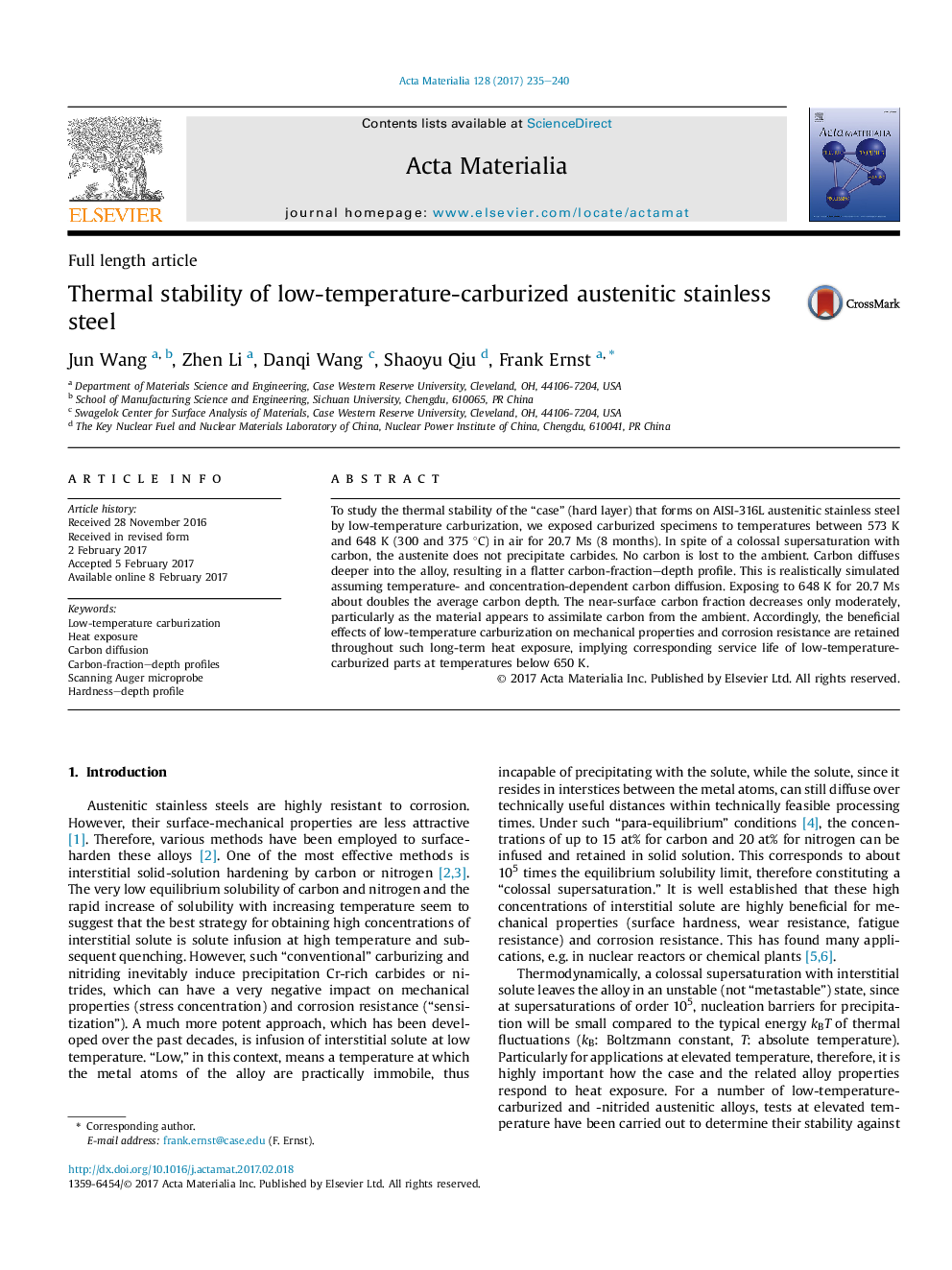| کد مقاله | کد نشریه | سال انتشار | مقاله انگلیسی | نسخه تمام متن |
|---|---|---|---|---|
| 5436277 | 1509548 | 2017 | 6 صفحه PDF | دانلود رایگان |

To study the thermal stability of the “case” (hard layer) that forms on AISI-316L austenitic stainless steel by low-temperature carburization, we exposed carburized specimens to temperatures between 573 K and 648 K (300 and 375 °C) in air for 20.7 Ms (8 months). In spite of a colossal supersaturation with carbon, the austenite does not precipitate carbides. No carbon is lost to the ambient. Carbon diffuses deeper into the alloy, resulting in a flatter carbon-fraction–depth profile. This is realistically simulated assuming temperature- and concentration-dependent carbon diffusion. Exposing to 648 K for 20.7 Ms about doubles the average carbon depth. The near-surface carbon fraction decreases only moderately, particularly as the material appears to assimilate carbon from the ambient. Accordingly, the beneficial effects of low-temperature carburization on mechanical properties and corrosion resistance are retained throughout such long-term heat exposure, implying corresponding service life of low-temperature-carburized parts at temperatures below 650 K.
Figure optionsDownload high-quality image (130 K)Download as PowerPoint slide
Journal: Acta Materialia - Volume 128, 15 April 2017, Pages 235–240